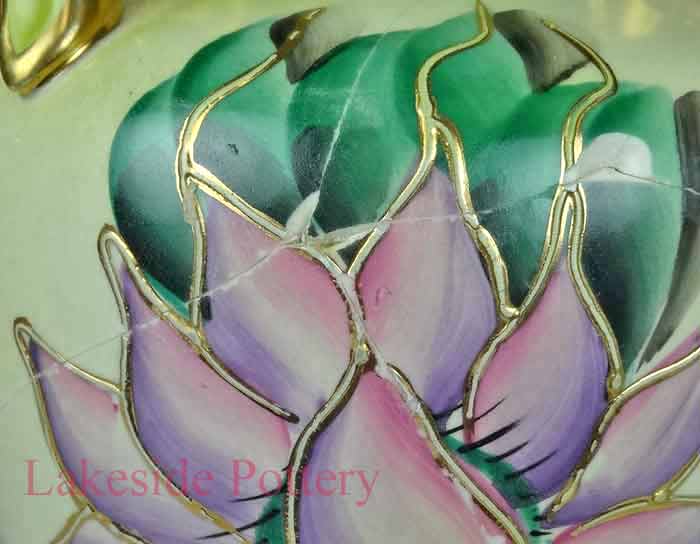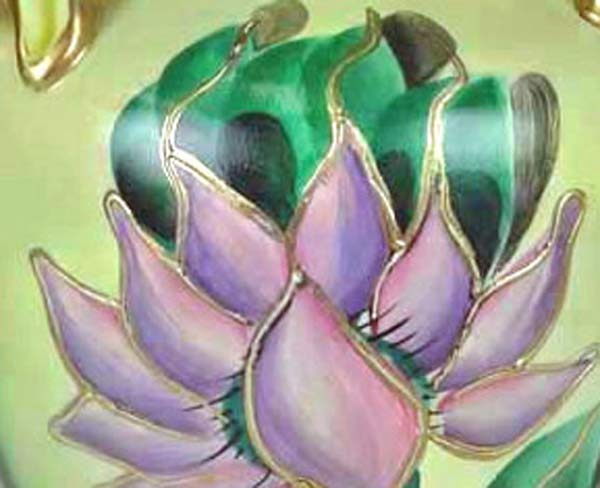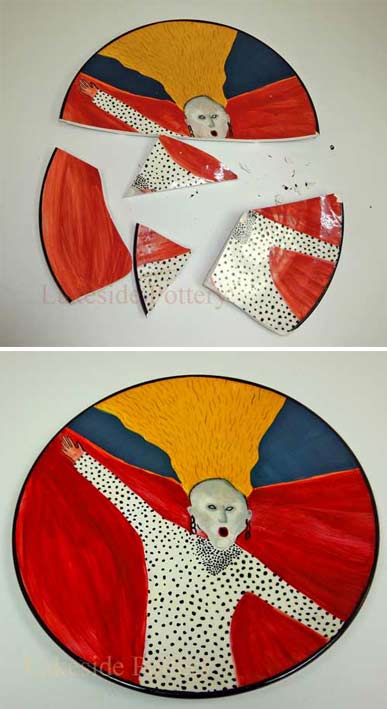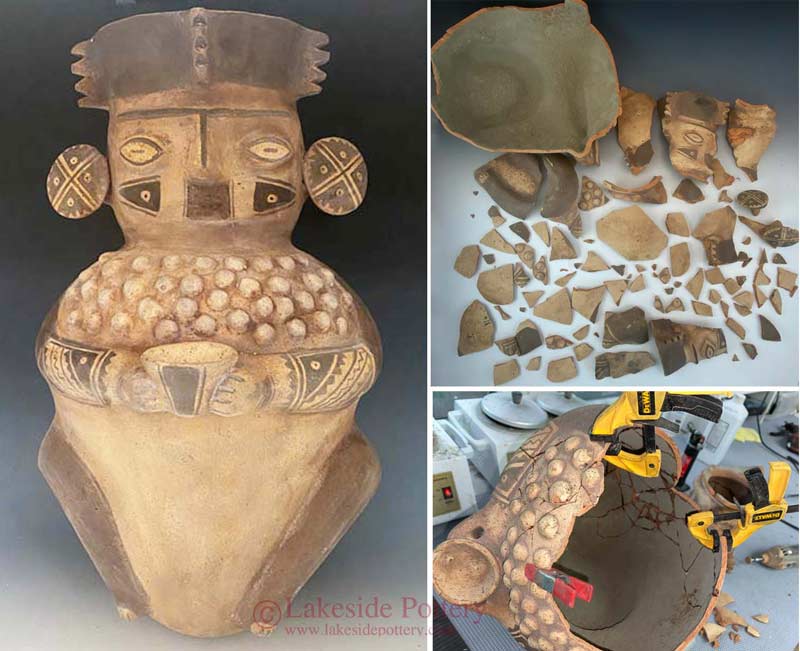Ceramic & Sculpture Repair Lessons
(click pictures)
|
|
DIY vs. Professional Ceramic and Sculpture Repair: What is the Difference?
Ceramic and pottery repair can range from simple at-home fixes to highly specialized professional restorations. Whether you are mending a broken mug, a valuable porcelain figurine, or a cherished heirloom, understanding the key differences between DIY and expert techniques is essential. While DIY repairs offer convenience and cost-effectiveness, they often fall short in precision, durability, and visual integrity. This guide will help you evaluate the pros and cons of each approach based on your piece's value, purpose, and your desired outcome, so you can confidently choose the best option for both appearance and longevity.

Glue only repair
|
 SInvisible / seamless repair
SInvisible / seamless repair
|
|
What You Can Expect from Pottery or Sculpture DIY Repairs
Thanks to online tutorials, repair kits, and accessible adhesives, home ceramic repair is more achievable than ever. For low-value, decorative, or sentimental pieces that don’t require perfection, DIY can be a rewarding and budget-friendly choice. It allows you to take immediate action and gain satisfaction from restoring something with your own hands. However, results vary depending on your materials, skill level, and patience. DIY fixes often leave visible seams or color mismatches, especially where glazes or intricate patterns are involved.
|
|
Common DIY techniques include:
• Glue only – For simple, clean breaks, this method is quick but often leaves visible seams.
• Glue + filler – Fills chips and uneven gaps to improve the object's overall shape.
• Glue + filler + sanding + paint – Attempts to blend colors and surfaces using acrylic paint, but sheen, color integration, and textural matching remain difficult.
Limitations of DIY repair:
• Visible flaws remain.
• Matching texture, color and glaze is challenging.
• Repairs often lack long-term strength, especially with regular handling.
|
|
What Professional Ceramic, Pottery or Sculpture Restoration Can Achieve
|
|
|
At Lakeside Pottery Restoration Studio, professional restoration involves a multi-step process with archival materials that work in harmony to prevent future degradation or visual reemergence of the damage. The goal is to restore the piece as closely as possible to its original condition, both structurally and visually.
|
|
Professional restoration advantages:
• Seamless results - Advanced materials and fine detailing create an invisible repair.
• Structural integrity - Industrial-strength adhesives ensure a long-lasting bond.
• Reconstruction of missing parts - Handles, rims, or sculpted details can be sculpted.
• Precise color and glaze matching - Layered airbrushing and brush painting match original colors and finishes including glaze sheen level while prioritizing minimal impact to original surfaces.• Preservation of value - Proper restoration retains collectible or sentimental value, and in some cases, enhances it.
|
 |
When to Choose DIY vs. Professional Repair
Consider DIY repair when:
• The break is clean and the piece is purely decorative.
• Budget is limited.
• You don’t mind visible seams or imperfections.
• You’re comfortable experimenting with adhesives and paints.
Opt for professional restoration when:
• The piece holds significant emotional or financial value.
• Parts are missing or complex forms are broken.
• You want the repair to be invisible and long-lasting.
• You plan to display the piece prominently.
|
 |
Important Factors to Consider
Before deciding how to proceed, ask yourself:
• What is the item’s value - emotional, historical, or monetary?
• Will I be satisfied with a visible repair?
• Do I want a display-worthy or heirloom-quality result?
• Do I have the tools and skills to attempt the repair myself?
Also remember: even professionally restored items should not be used for food or liquids unless
|

|
Conclusion: The Right Repair for the Right Piece
Repairing broken pottery can be more than restoration, it can be a form of renewal. While DIY fixes are fine for casual or low-value items, only a professional can offer seamless repairs that honor the original craftsmanship and maintain long-term integrity.
At Lakeside Pottery Studio, we specialize in invisible repairs that breathe new life into pieces once thought beyond saving. If you're unsure which option is right for you, feel free to contact us for an evaluation.
|
 |
|
|